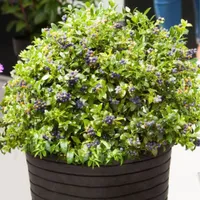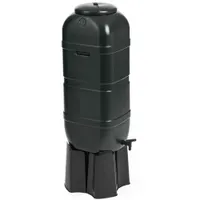How to grow blueberries in pots – experts say it's the best and easiest way to do it
Yes, you can grow blueberries in pots, if you follow these expert GYO tips...

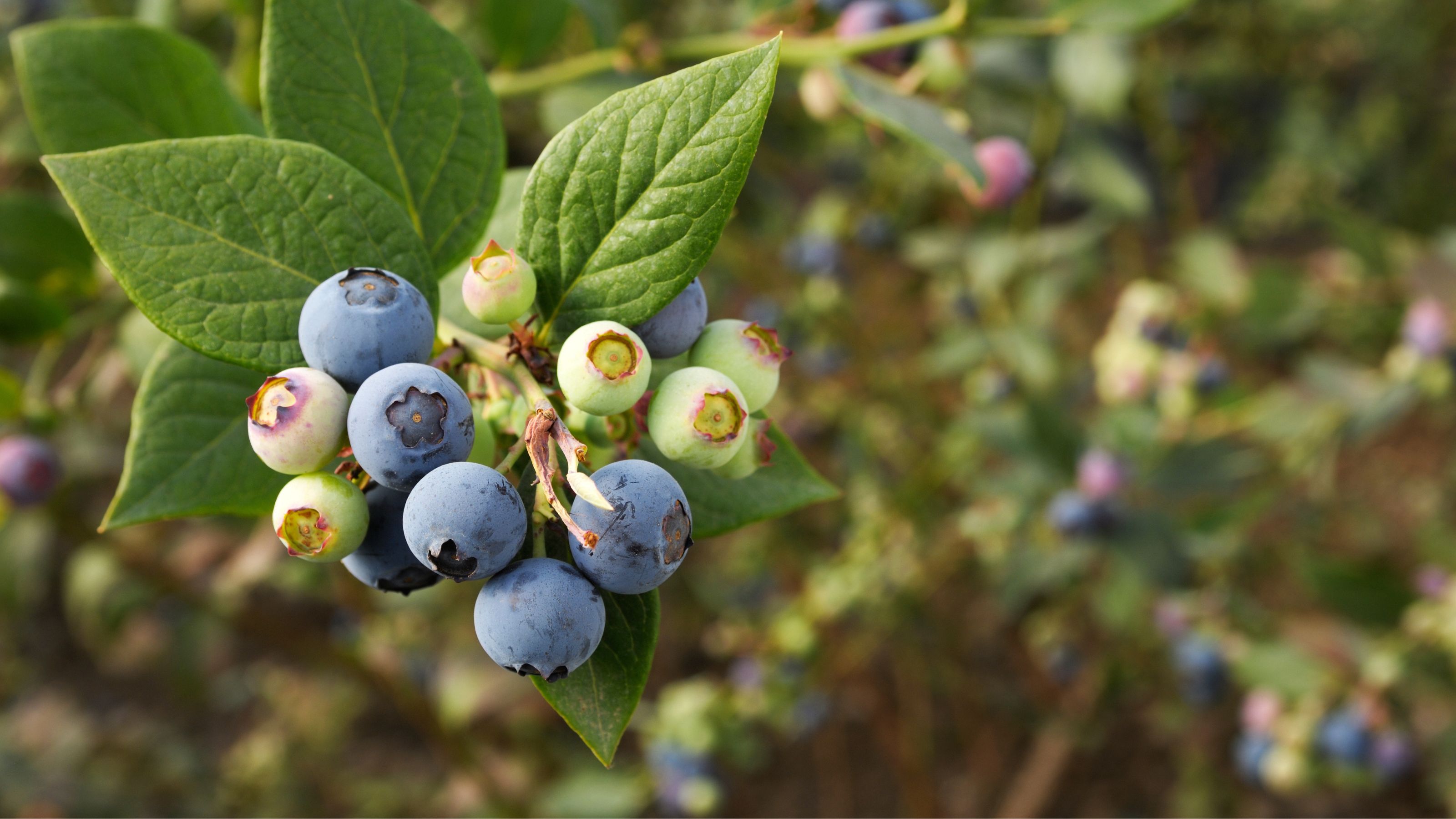
If you've ever been tempted to grow blueberries in pots, you're not alone. Often called a superfood, these small but mighty berries are one of the best fruit and vegetables to grow yourself – not least of all because it'll save you money on punnets of supermarket berries in the long run.
So, why aren't people growing blueberries as readily as they are, say, tomatoes and cucumbers? Well, it all comes down to the fact that you need very specific soil conditions to grow blueberries, prompting many to turn to other grow-your-own vegetables, fruit, and herbs instead.
'Blueberries are often grown in a container as they need a particular type of soil to thrive,' says award-winning garden designer Zoe Claymore, who has just been named ambassador for the National Allotment Society. 'This is acidic soil.'

Zoe Claymore is a multi award-winning garden designer based in London. She focuses on creating outdoor places with emotional connection and ecological integrity for her private and commercial clients.
As ever, Zoe is correct: those ultra-specific soil conditions actually make it easier than ever to grow blueberries in pots, as you can create a custom cocktail of compost for them without impacting the soil acidity of your wider garden. Win!
How to grow blueberries in pots
One of the tastiest edimentals around, blueberry bushes are every bit as pretty as they are productive; think small white flowers in spring, dusky blue fruits in summer, and an explosion of riotous autumn colour come fall.
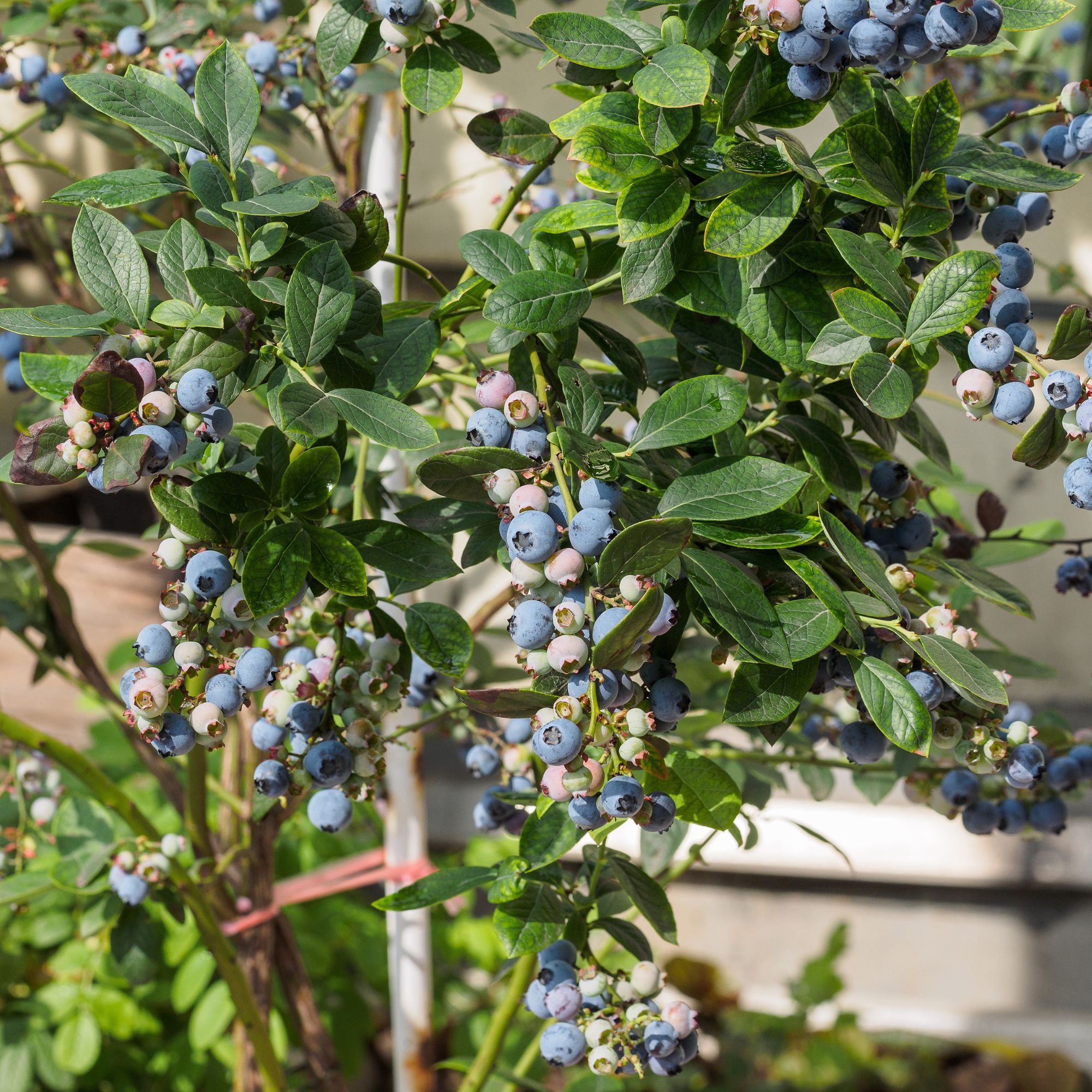
Better still? Much like raspberry canes, you can absolutely grow blueberries in pots – which means they're just as suited to life on a small patio or balcony garden as they are an allotment.
'You might think that blueberries can only be grown in the ground, but this is simply not true,' says Craig Wilson, co-founder, director & in-house gardening expert at Gardeners Dream.
Sign up to our newsletter for style inspiration, real homes, project and garden advice and shopping know-how

Craig Wilson, co-founder and director of Gardener's Dream Ltd, has established himself as a key figure in the online gardening industry. With over two decades of plant knowledge and gardening experience, he takes pride in sharing his top tips and tricks for the garden.
'You can grow them in pots every bit as effectively; you just need to invest a little bit more time.'
Blueberry 'BerryBux' | £9.99 at Crocus
Ideal for pots, this neat and compact blueberry bush boasts a bumper crop of delicious blueberries (not to mention plenty of nectar-filled blooms for pollinators, too!)
Intrigued? Look this way for all the experts tips and advice you need to make your burgeoning blueberry dreams a reality...
What you will need
Before you get started on this lovely GYO project, it's important to gather together all of the tools and equipment you will need:
- A blueberry plant (Zoe advises you look for a compact variety, like Blueberry 'Top hat' from Thompson & Morgan, as these are best suited to life in a container)
- A decent sized pot, like this Ashford Planter from Homebase
- A good ericaceous (acidic) compost
- A trowel
- A sturdy bamboo cane (you can buy them in bulk from Amazon)
- A liquid fertiliser specifically for ericaceous plants, such as Westland Ericaceous High Performance Liquid Plant Food from Amazon

Step-by-step guide
It's relatively easy to grow blueberries in pots – once you know how, that is. To help you on your way, just flit your eyes downward: our team of experts have broken the process down into some easy-to-follow steps...
1. Choose your pot wisely
As you might imagine, learning how to grow blueberries in pots is a process that begins with choosing the right pot.
'Choose a pot at least 40cm wide, but I'd go to 60cm if you can,' advises Zoe, noting that certain varieties of blueberry will need less or more space (check the label for advice).
'Make sure that whichever pot you choose has plenty of drainage holes,' adds Craig, noting that you really want to prevent water from accumulating at the bottom. Blueberries hate to get too soggy!
2. Customise your soil
We've already mentioned that soil acidity is integral when it comes to growing blueberries in pots. Indeed, the Royal Horticultural Society (RHS) stresses that these plants must must be grown in acid soil or ericaceous potting compost, with a pH of 4.5–5.5.
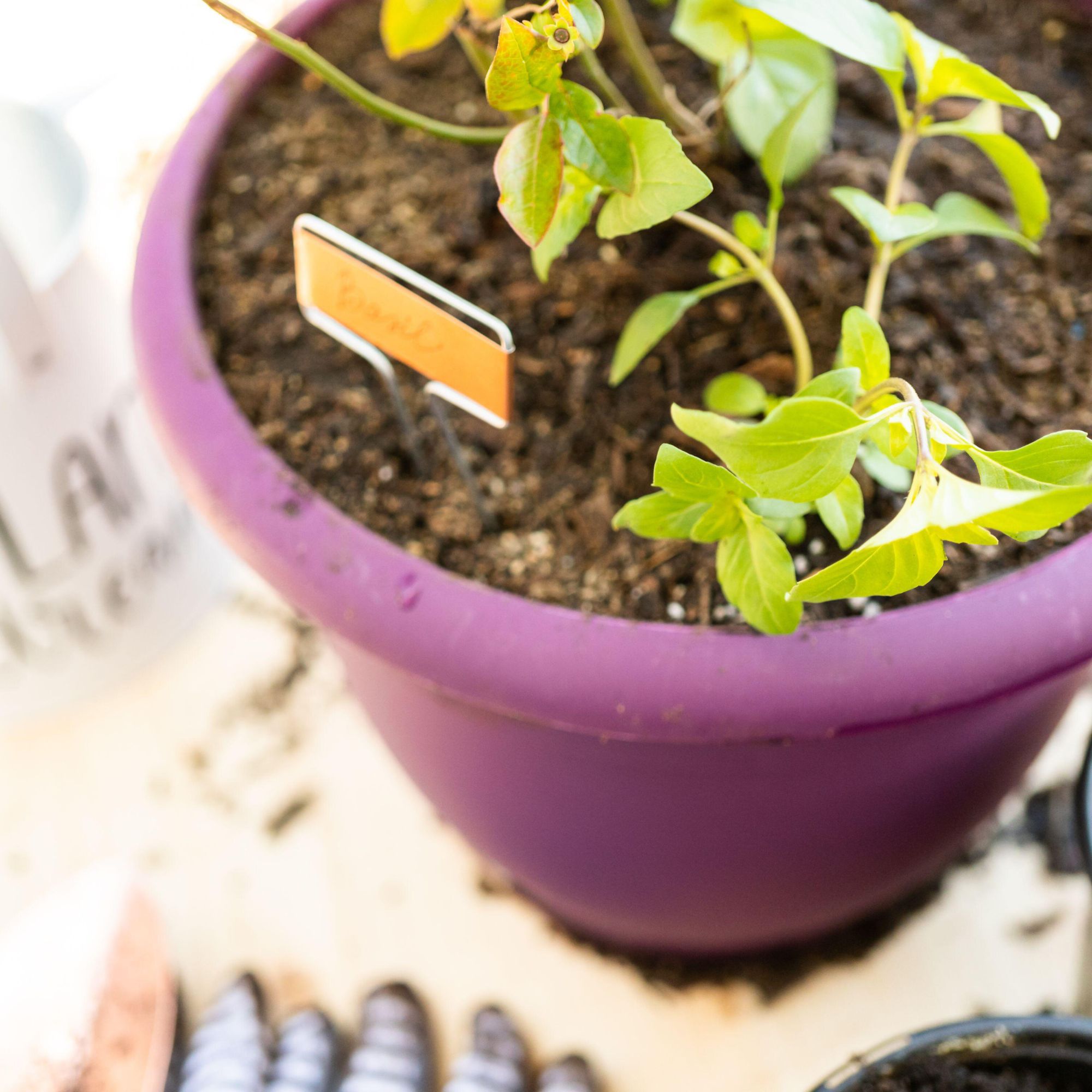
While Craig suggests opting for an acidic, soil-based, peat-free compost, Zoe says that she has experienced the best results by using 'half and half ericaceous compost and a soil-based compost'.
'I'd advise against using multi purpose compost in pots in general, as whilst great for adding onto soil it won't retain water at the same rate as a soil based one,' she adds.
3. Plant your blueberries
Now comes the fun bit of this delicious container garden idea: potting up your blueberries!
Sticking to one plant per pot, Craig says you need to 'fill your pot with your soil to a level where the roots will sit within the container, and plant your blueberries to the same depth as they are in their nursery pots'.
'Once you have done this,' he goes on, 'you need to push the soil down to compact it slightly before removing your blueberries from their nursery pot and placing them in your container.'
4. Fill all the gaps
It's a small step, but if you want to grow blueberries in pots so they thrive, Craig says you need to 'fill the remainder of the container around the plant with your soil, pushing it down and making sure to fill all gaps'.
5. Show them some TLC
Once you've planted your blueberries in pots, be sure to water them well, ensuring that you thoroughly soak the soil... but be sure to use the right water for the job.

'As the soil PH is so important for blueberries, I'd advise only using rainwater to water them,' says Zoe.
'This is not only more sustainable but also better for the plant, as our tap water can have lime in it affecting the pH of the soil over time.'
If you've yet to begin rain harvesting in earnest, then, now is the time to start. Zoe suggests you 'install a water butt or, if that isn't an option, leave out buckets and items that will collect water'.
Strata Water Butt with Connection Kit, Tap and Stand | £35 at Argos
This Slim Water Butt Kit is ideal as an alternative to hosepipes in times of drought, as it collects and stores rain water effectively.
Craig, meanwhile, urges gardeners to remember that 'blueberries' roots dry out quickly so going forward you’ll need to keep on top of watering them (twice a week during the summer's growing season), making sure drainage is sufficient as not to leave the roots sitting in water'.
He adds that you need to 'place your plants in sheltered areas, especially when winter winds are high', while Zoe suggests you 'give them a feed once a week with ericaceous plant food', too.
6. And think about gifting them a friend (or two)
While most blueberries are partly or fully self-pollinating, cross-pollinated plants tend to produce larger harvests – which is why Craig suggests having more than one on the go.
'For cross pollination you will require a minimum of two plants of different varieties within the same species,' he says.
'Place the pots close together, and try to make sure they are varieties that will bloom around the same time, to make it even easier for the bees to cross pollinate the plants.'
FAQs
Is it best to grow blueberries in pots?
While you can absolutely plant blueberries into the ground, many prefer to grow them in pots as it means you can give them the ultra-specific soil conditions they need.
'If you can grow azaleas, rhododendrons and camellias in your garden, blueberries should be successful, too,' advises the RHS.
Otherwise, it's best to grow blueberries in pots or raised beds filled with ericaceous soil or ericaceous potting compost.
Do you prune blueberry bushes in pots?
You shouldn't need to prune a blueberry bush for the first two years, although you may want to tidy it up on occasion.
After this, you'll want to learn how to prune blueberries and give them a good prune sometime between late February and early March: the aim is that you're left with a bush that is 'one-third old stems, one-third middle-aged stems and one-third young stems', says the RHS.
If you're worried about the size of your blueberry plants, it might be more prudent to think about container size. Indeed, Zoe says that you will need to 're-pot every few years'.
What are the best blueberries for containers UK?
It is best to seek out more compact varieties of blueberry if you intend to grow yours in a pot or container. Try something like the Blueberry 'Top hat' from Thompson & Morgan or the Blueberry 'BerryBux' from Crocus – or alternatively seek out the RHS-approved ‘Bluetta’ or ‘Sunshine Blue’.
Now that you have all the details you need to grow blueberries in pots, all that's left to do is decide what you'll be doing with your bumper crop once they begin to ripen from mid-summer onwards.
While jams, berries, crumbles, baked goods, and breakfast goodies are probably at the top of your list, it's worth noting that you won't enjoy any if you leave them out for the birds to gobble up.
Cover them with a netting or fruit cage, then, to make sure you're left with something to eat – and, if you're feeling generous, maybe scatter a few berries for your feathered friends to enjoy, too.

Kayleigh Dray became Ideal Home’s Acting Content Editor in the spring of 2023, and is very excited to get to work. She joins the team after a decade-long career working as a journalist and editor across a number of leading lifestyle brands, both in-house and as a freelancer.
